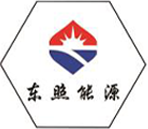
Sep . 30, 2024 09:52
Back to list
Design and Functionality of Pressure Regulation Devices in Various Applications
The Importance of Pressure Regulating Devices in Modern Systems
Pressure regulating devices are crucial components in various industrial, commercial, and residential applications. These devices ensure that the pressure of gases or liquids remains stable and safe, regardless of fluctuations in supply pressure. By maintaining a consistent output pressure, pressure regulators enhance system performance, prolong equipment life, and ensure safety. This article explores the significance, types, applications, and advantages of pressure regulating devices.
Understanding Pressure Regulation
Pressure regulating devices function by controlling and adjusting the pressure of fluids within a system. They operate on the principle of maintaining a desired output pressure, even when the input pressure varies. This is essential in applications where excessive pressure can lead to system failures, accidents, or inefficiencies. Pressure regulators can be mechanical or electronic, and their design varies based on the application requirements.
Types of Pressure Regulating Devices
1. Mechanical Pressure Regulators These are the most common type and operate using a diaphragm or spring mechanism. They automatically adjust to maintain a preset output pressure. Mechanical regulators are widely used in gas distribution systems, HVAC systems, and other applications where simplicity and reliability are needed.
2. Electronic Pressure Regulators These devices utilize sensors and electronic controls to precisely regulate pressure. Electronic regulators offer higher accuracy and faster response times compared to mechanical ones. They are often used in advanced applications such as robotics, medical devices, and aerospace systems, where precision is critical.
3. Back Pressure Regulators These regulators maintain a set pressure within a specific part of a system by allowing excess pressure to be vented away. They are commonly used in processes such as chemical manufacturing and oil and gas industries.
4. Pressure Relief Valves While not traditional regulators, pressure relief valves are essential safety devices that prevent overpressure situations. They automatically release pressure when it exceeds a predetermined level, protecting equipment from damage.
Applications of Pressure Regulating Devices
pressure regulating device

Pressure regulating devices are found in a wide range of applications
- Gas Distribution Systems In natural gas distribution, pressure regulators ensure that the gas delivered to homes and businesses is at a safe and usable pressure. - HVAC Systems In heating, ventilation, and air conditioning systems, pressure regulators maintain optimal airflow and prevent duct damage due to pressure fluctuations. - Chemical Processing In the chemical industry, maintaining precise pressure is essential for reaction control and safety. Regulators help achieve the desired conditions for various processes. - Water Supply Systems Pressure regulators in water supply systems ensure consistent water pressure at the point of use, preventing bursts and maintaining efficient flow.
Advantages of Using Pressure Regulating Devices
1. Safety By controlling pressure, these devices minimize the risk of accidents due to overpressure situations, protecting both personnel and equipment.
2. Efficiency Pressure regulation optimizes the performance of pumps and compressors, leading to energy savings and reduced operating costs.
3. System Longevity By preventing pressure spikes and maintaining a stable environment, pressure regulators extend the lifespan of equipment and reduce maintenance needs.
4. Consistency In applications where precise pressure is critical, such as in pharmaceuticals or food processing, regulators ensure that product quality remains consistent.
5. Versatility With various types available, pressure regulating devices can be used in diverse applications, from industrial settings to everyday household use.
Conclusion
Pressure regulating devices play a vital role in ensuring the efficiency and safety of various systems. Their ability to maintain consistent pressure not only enhances performance but also protects against potential hazards. As technology advances, electronic pressure regulators are becoming more prevalent, offering even greater precision and control. Overall, the importance of these devices cannot be overstated, as they contribute significantly to the reliability and safety of modern infrastructure. Whether in industrial settings or daily life, pressure regulation remains a key factor in successful operation and management of fluid systems.
Latest news
-
Safety Valve Spring-Loaded Design Overpressure ProtectionNewsJul.25,2025
-
Precision Voltage Regulator AC5 Accuracy Grade PerformanceNewsJul.25,2025
-
Natural Gas Pressure Regulating Skid Industrial Pipeline ApplicationsNewsJul.25,2025
-
Natural Gas Filter Stainless Steel Mesh Element DesignNewsJul.25,2025
-
Gas Pressure Regulator Valve Direct-Acting Spring-Loaded DesignNewsJul.25,2025
-
Decompression Equipment Multi-Stage Heat Exchange System DesignNewsJul.25,2025

